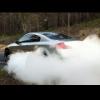Educated Guess At The Final Tune Results
Announcements
-
Similar Content
-
Latest Posts
-
Apologies if I sounded like a arse My point was that you will not be able to buy a rotisserie that suits your car, you get the rotisserie frame, and then fabricate parts to mount the rotisserie frame to the body The rotisserie side is easy, but the fabrication of the actual mounts is the tricky part, where to mount so you don't bend/twist the body, plus the geometry involved to get it to turn If your capable at fabrication, and can work out where the C/L is in relation to the weight is so it actually can turn, you should be sweet I would love to see the progress on this just for the thought processes and fabrication
-
By joshuaho96 · Posted
Type "M2" means it's a series 2. I would not be shocked to learn that the production changeover was somewhat lax and a late 12/95 production car actually got mostly series 2 parts with a bit of series 1 leftover. Post the VIN and it'll be easier to investigate. -
Yes, well, mine were 31 years old last year when they finally got done. Started to leak a bit.
-
I've ordered a new fuel pump and plan to do all the fuel tank hoses at the same time. Those are the hoses I would rather not go on the road.
-







Recommended Posts
Create an account or sign in to comment
You need to be a member in order to leave a comment
Create an account
Sign up for a new account in our community. It's easy!
Register a new accountSign in
Already have an account? Sign in here.
Sign In Now